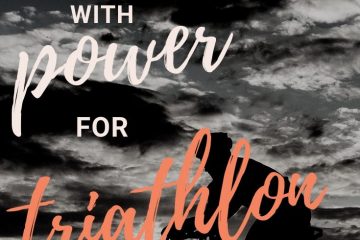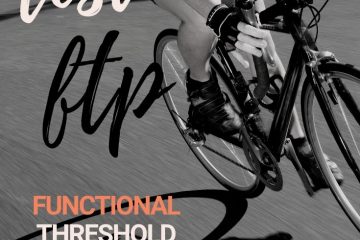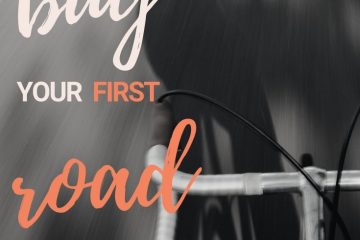The Courage to Tri: Jenny Johnson

[vc_row][vc_column][vc_single_image image=”2869″ img_size=”full”][vc_column_text]
My journey with osteochondritis dissecans (OCD)—a joint condition where bone underneath cartilage dies due to lack of blood flow—started at the young age of 13. At 13, there was a possibility that the condition would heal itself since I was so young. With high hopes, the doctor handed me a pair of crutches and said to come back in six months.
Yep, you heard it right, six months on crutches with “hopes” of the bone healing itself; there went my freshman year of basketball. I remember returning to the doctor later that spring, and, of course, I told the doctor that I felt great! Little did he know that I had unbearable pain in my right knee, but I wasn’t going to tell him that for fear of being put back on crutches and losing yet another season of basketball. After all, I had a college scholarship to train for.
Fast forward four years, and there I was, senior year of high school, All-State basketball team, headed to the All-Star game, and a college basketball offer in my hands. I had made it! Or had I? I remember driving to our state’s capital for the All-Star game, ready to prove that I was ready for the next level of competition. My knee had other plans, though. I remember making it to halftime, but I was in so much pain I just wanted to cry and quit.
Fast-forward one year from my All-Star game catastrophe. There I am, sitting in a waiting room in Birmingham, Alabama, waiting to see yet another specialist to diagnose me and give me my “options” for treatment. I remember Dr. James Andrews and Dr. Lyle Cain reading my X-rays and MRIs, in complete shock at the 2-inch hole in my femur. “You’ll never run again.” I remember it like it was yesterday. Those four simple words spoken by my orthopedic surgeon. This disease had destroyed my dreams of ever playing collegiate basketball and now even threatened my ability to ever walk normally again.
[/vc_column_text][vc_single_image image=”2410″ img_size=”medium” alignment=”center”][vc_column_text]Calling all ladies with a dream of crossing their first finish line!
Have you dreamed of crossing a finish line but have no idea how to get from now to the starting line? Do you have a secret goal you’re terrified to tackle? Join us for an interactive information session on tackling your first triathlon. Ask questions of the women featured in Courage to Tri and find out how little you need to get started.
4:30 PM- Courage to Tri Panel – “Tackling Your First Tri” [/vc_column_text][vc_single_image image=”2410″ img_size=”medium” alignment=”center”][vc_column_text]
I couldn’t juke left or right. I couldn’t stop the drive. I couldn’t keep up. I was in serious pain. I remember the long drive home. I remember the disappointment in my mom’s face because I didn’t play hard and was lazy on defense. I remember finally breaking down. For four years, I had hidden the knee pain, I had hidden the pain medications, I had hidden the late-night Epsom salt baths and ice packs, but there was no hiding it anymore. I remember calling my college coach, explaining the situation, and officially declining my contract to play collegiate basketball. My dreams shattered, just like the bones in my knee.
Fast-forward one year from my All-Star game catastrophe. There I am, sitting in a waiting room in Birmingham, Alabama, waiting to see yet another specialist to diagnose me and give me my “options” for treatment. I remember Dr. James Andrews and Dr. Lyle Cain reading my X-rays and MRIs, in complete shock at the 2-inch hole in my femur. “You’ll never run again.” I remember it like it was yesterday. Those four simple words spoken by my orthopedic surgeon. This disease had destroyed my dreams of ever playing collegiate basketball and now even threatened my ability to ever walk normally again.
I remember hearing my options. Bone grafts were a long shot because of the severity of my OCD legion. Stem cell treatment was still in its infancy stages. I remember looking out the window with the doctor’s voice just droning on in the background. After much deliberation, I was put on the transplant list. A bone transplant was risky, but it was my “best” option. Two weeks later, I got the call. They had found a donor. The surgery was hard; recovery was hell. Bed ridden for two months, crutches for nine, PT for over two years—five total surgeries in all. I was an athlete, through and through—volleyball, basketball, soccer, softball, racquetball—I thrived on the rush of competition.
But now, my greatest competition was convincing my spirit that I should eat and get out of bad each day. Depression hit hard; addiction hit harder. From 130 pounds to 105 in just nine months, I was sick, not just physically, but mentally and emotionally and spiritually. The worst part: The surgery didn’t take the pain away. In fact, it made it ten times worse.
I remember going nights without sleep because of the pain. I remember throwing up time and time again because of the heavy doses of oxycontin, hydrocodone, and morphine being pumped through my system. As each day passed, the healing slowly began. I busted it in PT. I was diligent. I never missed an exercise. I was going to run again—they just didn’t realize it yet.
As the physical healing began, so did the emotional. The depression broke; the addiction to pain meds was overcome. The next step to healing was buying my first bicycle. Recommended by Dr. Cain, cycling would be a phenomenal way for me to exercise since it is a low-impact sport. I remember my first group ride—four total falls in clip-in shoes.
My legs were so weak from the muscle atrophy that I couldn’t keep up. Three total group rides, and I was dropped in all of them. I hated this sport! This sport was humiliating and did nothing but remind me of how much fitness I had lost. So, I hung it up, and for three years my bike hung on my wall, collecting dust.
I graduated college from Clemson University (Go Tigers!) and moved to Atlanta. Call it perfect timing or divine intervention, but every corner I turned, I met cyclists. I started doing group rides. By now I was a bit stronger because it had been five years since my last surgery. I was slowly catching the bike “fever.”
And then, my first sprint triathlon. I was hooked! I was the last out of the water (did I mention I didn’t learn how to swim until I was 24 years old because of my tremendous fear of water?), I was slow on the bike, and I was even slower on the run. But I didn’t care. I was running again! I was competing again! I was nearly dead last, but I was grinning from ear to ear. The rest is history.
Three months later I registered for my first Ironman race—Ironman Louisville. From sprint to full distance, I was going big or going home. I was going to prove to the doctors that I would run again! I was going to prove to myself that I was an overcomer. So, I trained. I trained hard. 4 AM masters swim classes. Two-a-day workouts for strength training and rehabilitation. Long weekends spent in the saddle. And, most importantly, strategic run workouts and constant communication with my coach (Meghan Fillnow with Fillnow Coaching) to make sure we were building a strong base and increasing my mileage at just the right times. In July 2014, I had my first podium—3rd Overall Female at the Chattahoochee Challenge Olympic Triathlon. By August 24, 2014, I was ready to conquer my first 140.6. I swam 2.4 miles. I biked 112 miles. And yes, I RAN 26.2 miles! I crossed that finish line. And I’ll never forget those four simple words, “You are an Ironman.”
[/vc_column_text][vc_column_text]

Unfortunately, however, my journey with OCD will be lifelong. In 2015, the doctors found once again that my transplant was failing as I was beginning to have more pain and more debris locking my joints. In December 2015, I once again was given “options.” Stem cell research had developed, but it was still a bit too early to go this route. Now 26 years old, I was still much too young for a knee replacement. My best option—subchondroplasty.
Like a sink hole in the road, my knee was collapsing from the inside out. The doctor’s best course of action was to go in under the cartilage in efforts of reinforcing the bone inside my femur. This wouldn’t fix my issues, but it would potentially buy me some much needed time until stem cell treatment was developed enough to become a viable course of action. So, here I am, a year outside of subchondroplasty surgery, PT is officially over, and I have my eyes set on conquering Augusta 70.3. This time, my training will be full of cycling, swimming, and crosstraining. My running miles will be limited. I know I won’t be seeing a podium finish anytime soon, but I am okay with that. I am competing again, and for that, I am grateful.
From “You’ll never run again” to “You are an Ironman,” I had defied the odds. I had proven the doctors wrong. I had achieved my goal—not by my strength, but through the strength and healing of the Lord Himself. I truly believe that the Lord gives and takes away. He took away my dreams of college basketball, but He gave me a passion for triathlon that I would have never found otherwise.
The friends I have met through this sport have been a blessing. The lessons I have learned have been irreplaceable. I am thankful for my disease—for what it has taught me, for the strength it has given me, for the relationships it has brought me, for the love of triathlon it has instilled within me. Every time I step up to the start line, I am overwhelmed with the ability to compete. Every time I cross the finish line, I am reminded that hard work pays off and that miracles of healing do happen. Never give up! Never say never![/vc_column_text][/vc_column][/vc_row][vc_row][vc_column][vc_column_text css=”.vc_custom_1533304763429{background-color: #00a4b0 !important;border-radius: 20px !important;}”]
“I truly believe that the Lord gives and takes away. He took away my dreams of college basketball, but He gave me a passion for triathlon that I would have never found otherwise.”
[/vc_column_text][vc_column_text]
Meet the Women of Courage to Tri!
[/vc_column_text][vc_basic_grid post_type=”employees” max_items=”1″ element_width=”12″ grid_id=”vc_gid:1533309798854-bd80794a5815983579c4b51281ca3dae-5″][/vc_column][/vc_row][vc_row][vc_column][vc_column_text]
[/vc_column_text][/vc_column][/vc_row]


